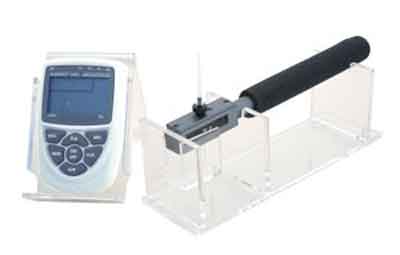Aesthesiometers (also sometimes spelled as esthesiometers) are used to understand the tactile sensitivity of parts of the body such as the mouth, skin or eye. Measuring the level of sensitivity is known as aesthesiometry and there are various types of aesthesiometers that work for different functions. This blog post will explore some of the types of aesthesiometers and how they are used.
Von Frey Hair Aesthesiometer
This is a type of aesthesiometer that was developed in 1896, using filaments that are reliant on the principal that an elastic column will buckle elastically at a special force when compressed. This is dependent on the diameter, length and modulus of the material. When the column has buckled, the force that it exerts is constant, despite the degree of buckling. As such, these filaments can be used to exert a variety of forces to the skin of test subjects, to ascertain at which force the subject begins to feel pain.

The shorter the column, the higher the force required to buckle it, meaning that when the diameter of the filament is increased by a small amount, the buckling force increases substantially.
The filaments are usually created from nylon hairs which are all the same length but have varying diameters, meaning they can offer a range of forces between 0.008 grams force up to 300 grams force. These aesthesiometers are used for research, diagnostics and screening in both human and animal medicine, being used to study skin areas which have standard responsiveness as well as hyper/ hypo sensitive areas.
Semmes-Weinstein Aesthesiometer
This aesthesiometer uses nylon monofilaments which are the same length but have a range of diameters. The diameter and length are employed to control the force and 3-digit numbers are used to reflect the force of the aesthesiometer. These instruments stimulate small areas, meaning thar force is the appropriate measure rather than area as an equal area of skin is indented for both heavy and light forces.
Air-Based Aesthesiometers
There are also non-intrusive, air-based aesthesiometers which are frequently used to test cornea nerve sensitivity. They use controlled pulses or air to stimulate the area and the device gives readouts.
Additionally, thermal aesthesiometers can be employed to ascertain the sensitivity of thermal stimuli.
Aesthesiometers from San Diego Instruments
At San Diego Instruments, we sell an easy, user-friendly aesthesiometer system which enables researchers to investigate sensory and pain threshold in one system. Rigid tips can be used for pain threshold measurement and one of the 15 Supertips can be used when investigating sensory threshold. These tips are then attached to the load cell in the pressure probe, applied to the test subject and the unit will display and store the reading in grams to create a quick and easy test system, eliminating the need to manually calculate the results.
If you would like to find out more about aesthesiometers and our solutions, contact us today.